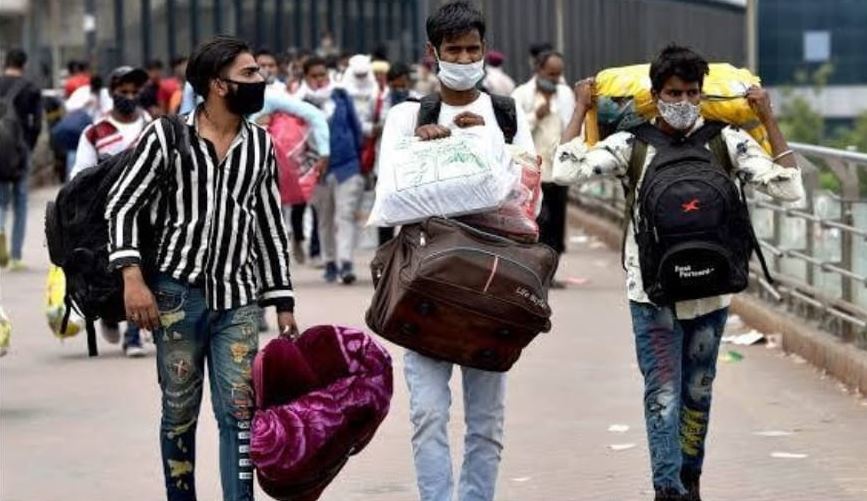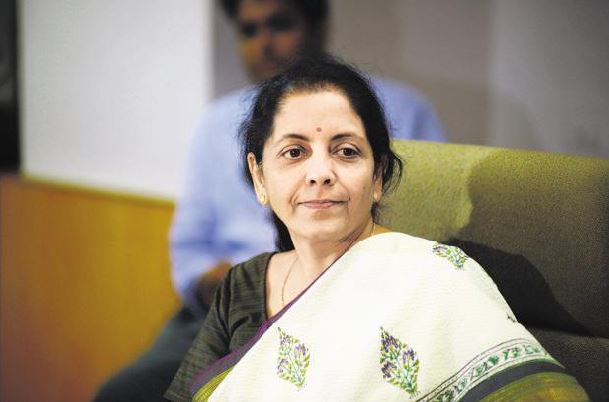
After Lockdown : Now what?
- May 8, 2020
- 0
Given the total shutdown across the world, with most major economies imposing some form of lockdown, the obvious question on the minds of investors is, how long will this lockdown continue, and at what cost?
The Covid-19 disease has extracted a huge price from the global economy. The disease continues to spread quickly. The world is going into a recession, and most indicators show far steeper falls in economic activity than even during the global financial crisis. Most countries will have negative growth for the year.
The theory here is clear. We need to bring the R (reproductive rate), or the number of people infected by someone who has the virus, down to below 1. If R is above 1, the virus will continue to proliferate; below 1, the virus will slowly decrease. The estimated R of Covid-19 is between 2 and 3. The entire objective of the lockdown is to bring R to below 1. Once this is accomplished, the strict lockdown can be relaxed, as long as we can ensure that R stays below 1, and more relaxed policies can be put in place. With this approach, the disease is not eliminated, but the number of cases remain stable and we avoid any sudden spikes, which could overwhelm health systems —the nightmare scenario every country is trying to avoid. The lighter control measures must remain in place till we get a vaccine, effective medication becomes available or till we achieve herd immunity so as to ensure any new local outbreak can be nipped in the bud. For a vaccine, we will need at the minimum 12-15 months.
The policy path is thus clear. Impose severe social controls and lockdowns, till such time as we can bring R to below 1. Then follow it up with a set of lighter controls, no large functions, some travel restrictions, targeted social distancing (for the old), strict testing and contact tracing, all designed to keep infections under control and give scientists time for the development of a vaccine or new medication. This way we are effectively buying time, with the least economic cost.
The good news is that strict social controls and lockdowns have proven to be effective in reducing the spread of the disease quickly.
The bad news, however, is that controls won’t just disappear. Lighter controls will have to remain in place for up to a year. The economic damage of lighter controls is as worrisome as a full lockdown. Controls, even limited ones, impact consumer confidence and consumption.
This is going to be a long haul. There will be substantial damage to the economy, especially the services sector.
There will be savage and unprecedented cuts to corporate profits. Consolidation will accelerate across sectors. Strong balance sheets will be a competitive advantage. Larger companies will gain share. There will be substantial bankruptcies and layoffs, especially among the small and medium enterprises sector.
Banks will have to brace for a surge in non-performing assets. Given the risk-aversion already visible among banks, over the last 24 months, the regulatory authorities have to ensure we do not see a credit freeze for everyone except AAA borrowers. Risk aversion will rise across the economy. It will be impossible to forecast FY21 profits, and it will be a lost year for most companies. Most corporations, across the world, will go into cash conservation mode, with all capex plans and discretionary spend on hold.
In such a risk-averse environment, the quality premium will sustain, no investor will tolerate governance issues or balance sheet stress.
The path ahead remains uncertain, but the central case for India and other economies must be a very sharp contraction in economic activity for the coming few weeks as the lockdown bites, followed by a slow recovery as we transition out of the lockdown to less strict social distancing. The willingness of governments to be bold and assertive in economic policy will be tested.
We will need the mother of all fiscal and monetary policy support to sustain the economy. Investors will back those countries and markets where the authorities step up.
Given the extent and importance of small and medium business to growth and employment in India, our dependence on services and the lack of a social safety net, we are uniquely vulnerable. The government has to be bolder.
लाॅकडाउन के बाद अब आगे क्या?
दुनिया भर में बंदी का दौर चल रहा है। तमाम बड़ी अर्थव्यवस्थाओं ने किसी न किसी तरह का लाॅकडाउन लागू कर रखा है। ऐसे में किसी भी निवेशक के मन में यह प्रश्न स्वाभाविक रूप से आएगा कि यह लाॅकडाउन कितना लंबा चलेगा और इसकी कीमत चुकानी होगी?
कोविड.19 महामारी वैश्विक अर्थव्यवस्था से एक बड़ी कीमत वसूल कर चुकी है। इस बीमारी का तेजी से विस्तार हो रहा है। दुनिया मंदी की ओर बढ़ रही है और अधिकांश संकेतक बता रहे हैं कि आर्थिक गतिविधियां तेजी से घटी हैं। यह गिरावट वैश्विक वित्तीय संकट के दौर से भी गहरी है। अधिकांश देशों में वृद्धि नकारात्मक रहेगी।
यह बात एकदम साफ है। हमें किसी संक्रमित व्यक्ति से संक्रमित होने वालों की तादाद कम करनी होगी। यदि हम इसकी दर एक से नीचे लाने में कामयाब रहे तो वायरस का विस्तार कम होने लगेगा। फिलहाल यह दर 2 से 3 के बीच है। लाॅकडाउन का लक्ष्य इसे घटाकर एक के नीचे लाना है। एक बार ऐसा हो गया तो इसे शिथिल किया जा सकता है। तब कड़े नियम शिथिल किए जा सकते हैं और अधिक सहज नीतियां अपनाई जा सकती हैं। इससे बीमारी समाप्त तो नहीं होगी लेकिन संक्रमण के मामले स्थिर हो जाएंगे और इनमें अचानक बढ़ोतरी नहीं होगी। हर देश ऐसी स्थिति से बचना चाहता है।
एक बार लाॅकडाउन समाप्त होने के बाद टीका बनने तक हल्के नियंत्रण से काम चल जाएगा। यह भी संभव है कि हमारा शरीर मजबूत प्रतिरक्षा विकतिस कर ले ताकि इसका प्रसार आसानी से रोका जा सके। टीका बनने में 12-15 महीने का समय लग सकता है।
नीतिगत राह स्पष्ट है। संक्रमण दर सीमित होने तक गंभीर सामाजिक नियंत्रण और लाॅकडाउन अपनाने होंगे। बाद में सीमित नियंत्रण हों, बड़े कार्यक्रम न आयोजित किए जाएं, यात्राएं सीमित हों, बुजुर्ग सामाजिक दूरी का पालन करें और जरूरत पड़ने पर सख्ती से जांच हो। ऐसा करने से हमें जरूरी समय मिल जाएगा और अर्थव्यवस्था को भी कम नुकसान होगा।
अच्छी बात है कि कड़े सामाजिक नियंत्रण और लाॅकडाउन ने इस बीमारी के प्रसार को सीमित करने का काम किया है।
बुरी खबर केवल इतनी है कि ये नियंत्रण अचानक समाप्त नहीं हो जाएंगे। हल्का फुल्का नियंत्रण एक वर्श तक चलता रहेगा। हल्के नियंत्रण भी अर्थव्यवस्था को उतना ही नुकसान पहुंचाएंगे जितना कि पूर्णकालिक लाॅकडाउन। ये नियंत्रण भी उपभोक्ताओं के विश्वास और खपत को प्रभावित करेंगे।
इसे पूरी तरह ठीक होने में लंबा समय लगेगा। अर्थव्यवस्था को काफी नुकसान पहुंचेगा। खासतौर पर सेवा क्षेत्र के हालात सुधरने में। कंपनियों के मुनाफे में भी भारी कमी आएगी। तमाम क्षेत्रों में सुदृढ़ीकरण आएगा। मजबूत बैलेंस शीट प्रतिस्पर्धी बढ़त दिलाने वाली साबित होगी। बड़ी कंपनियों की हिस्सेदारी बढ़ेगी। कई जगह दिवालिया और छंटनी जैसी गतिविधियां देखने को मिलेंगी। खासतौर पर छोटे और मझोले उपक्रमों में ऐसा देखने को मिलेगा। बैंकों के फंसे हुए कर्ज में इजाफा होगा। चूंकि बैंक पहले ही जोखिम से बच रहे हैं तो ऐसे में नियामकीय अधिकारियों को यह सुनिश्चित करना होगा कि ऋण वितरण में रूकावट न आए। पूरी अर्थव्यवस्था में जोखिम से बचने की प्रवृत्ति बढ़ेगी। वित्त वर्ष 2021 में मुनाफों का अनुमान लगाना मुश्किल होगा और ज्यादातर कंपनियों के लिए यह वर्ष एक गंवाया हुआ वर्ष बनकर रह जाएगा। दुनिया भर की ज्यादातार कंपनियां नकदी बचाने में लग जाएंगी। जोखिम से बचने वाले ऐसे माहौल में गुणवत्तापूर्ण चीजें बची रह जाएंगी। कोई निवेशक शासन के मुद्दों और बैलेंस शीट के तनाव की अनदेखी नहीं कर पाएगा।
आगे की राह अनिश्चित है। लेकिन मौजूदा लाॅकडाउन के कारण भारत तथा दुनिया के अन्य देशों की आर्थिक गतिविधियों में भारी स्कुचन आएगा। लाॅकडाउन कम होने और नियंत्रण घटने के बाद भी स्थितियों में धीरे-धीरे ही सुधार होगा। ऐसे में सरकार के आर्थिक नीति को लेकर आक्रामक और साहसी होने की परीक्षा होगी।
अर्थव्यवस्था को उबारने के लिए हमें तमाम राजकोशीय और मौद्रिक नीति समर्थन प्रदान करना होगा। निवेशक भी उन देशों और बाजारों का ही रुख करेंगे जहां प्रशासन पेशकदमी करेगा। देश में वृद्धि और रोजगार को बढ़ावा देने में छोटे और मझोले उपक्रमों के महत्त्व को देखते हुए, सेवा क्षेत्र पर हमारी निर्भरता को मद्देनजर और सामाजिक सुरक्षा ढांचे की कमी के कारा हम खासतौर पर संकट में हैं। सरकार को साहसी कदम उठाने होंगे।

































































